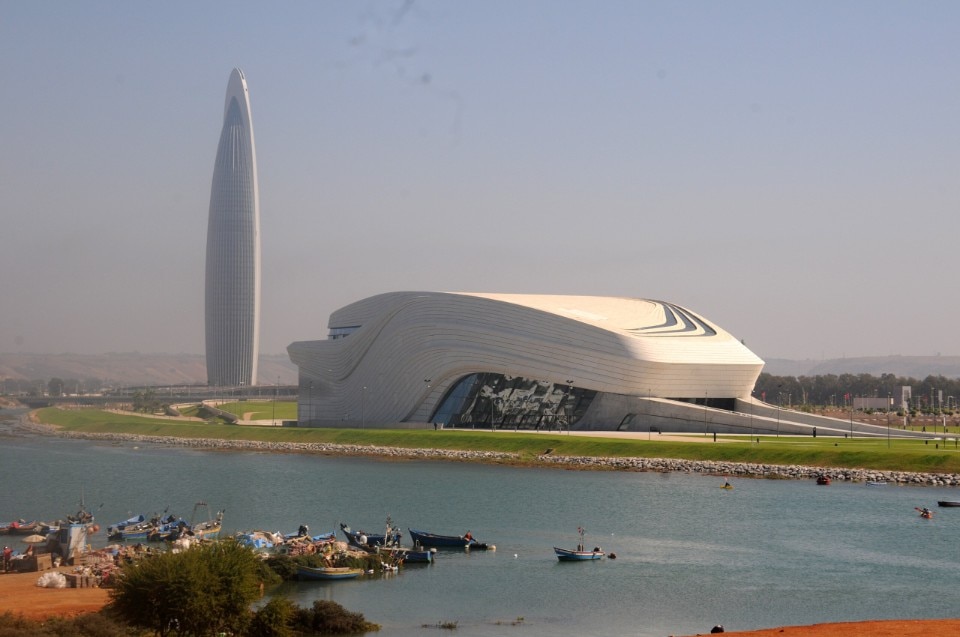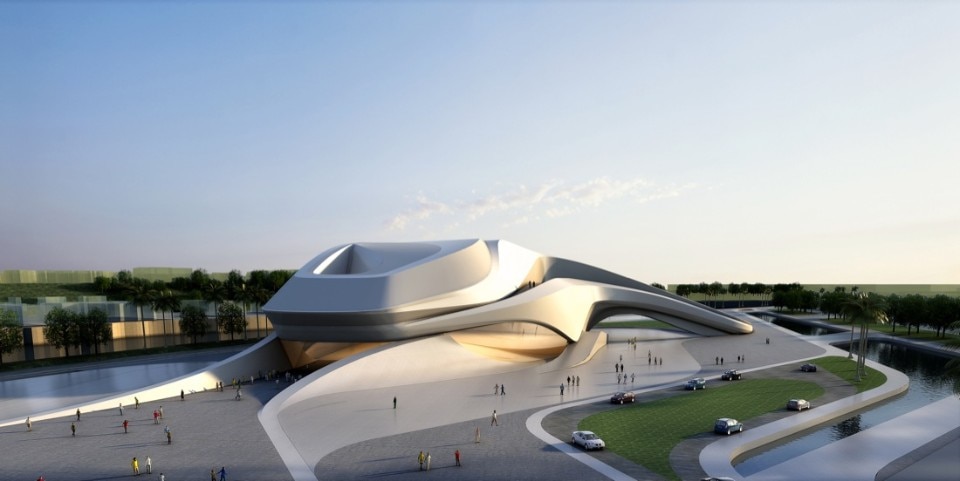Despite the pharaonic investments available, the political endorsement and the media visibility provided by the involvement of prestigious designers, even a dream of architectural grandeur with all the prerequisites to become reality can turn into a restless sleep waiting for the dawn lights to come on, or in particular in the case of the Grand Théâtre de Rabat, waiting for the limelight to turn on.
The work, one of the last designed by Zaha Hadid before her death in 2016, is part of an ambitious urban development process launched in 2010 by King Mohammed VI and is the “epicentre” of a new 110-hectare mixed-use district with cultural, recreational, commercial and residential functions located on the banks of the Bou Regreg river, between the cities of Rabat and Salé.
Zha's work, with a strong visual impact thanks to its astonishing aerodynamic forms inspired by the winding course of the neighbouring river and the fluidity of Arabic calligraphy, stands out like a wave of steel in the landscape, configuring itself as a seductive ‘’visiting card‘’ as in a broader territorial marketing strategy to promote the attractiveness of the Moroccan capital, like other masterpieces that have become icons representative of their host cities (starting with Frank Gehry's Guggenheim Museum in Bilbao).

The continent's largest theatre, the African counterpart to Jørn Utzon's Sydney Opera House, in a 55,000 square metres lot covers an area of around 27,000 and includes a 1,800-seat indoor theatre, a 7,000-seat outdoor amphitheatre, workshops and spaces for experimental performances. Work began in 2014 and was completed in 2021 amidst delays and difficulties (the death of the designer, a change of team, variants during construction and soaring construction costs) and yet, three years after the end of construction, the building shines in the sun still behind closed doors, inaccessible and passive spectator rather than protagonist of the adrenalin-fuelled urban transformation pulsating around it.
Between announcements of inaugurations and disconfirmations, early enthusiasms and deep disappointments, “diplomatic silence” (for political, economic, strategic reasons? It is not known) has descended on the enigma of the possible opening, only partially interrupted by the appearance of the building's image on the new 20-Dirham banknote: perhaps to quieten spirits and perplexity, but too little to provide concrete answers.

Timeless icons: the Marenco sofa by arflex
Designed by Mario Marenco, this masterpiece of Italian design has set the standard for over fifty years.




